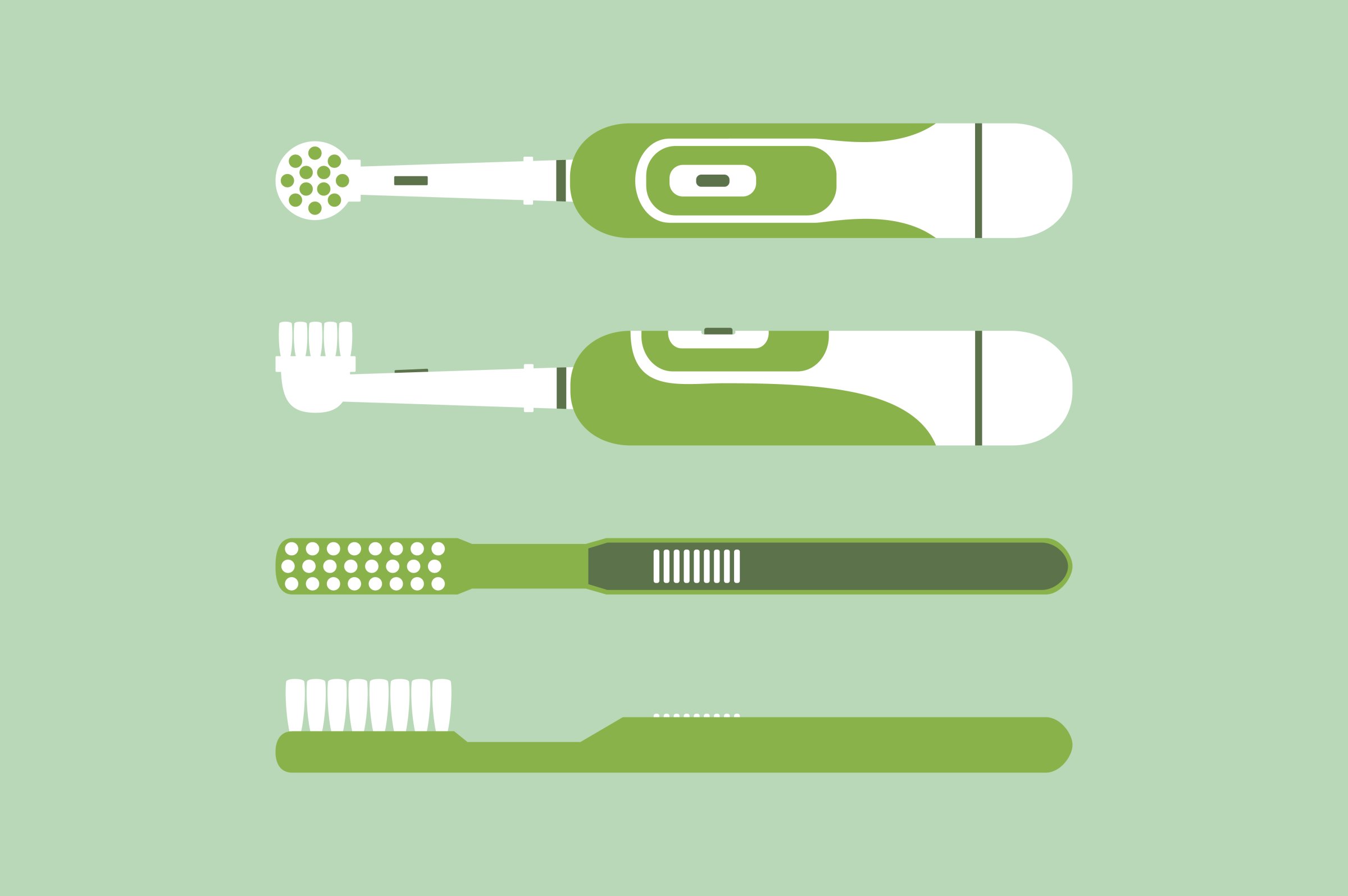
The chemicals in your toothpaste can accumulate on your toothbrush — and even after you change to a different brand, the original chemicals can stick around, a new study found.
Researchers examined the antibacterial compound triclosan, which federal authorities banned in over-the-counter products like antibacterial soaps and gels in 2016 after manufacturers were unable to prove it was safe for long-term use or more effective at preventing infection spread than soap and water. Exposure to high doses of triclosan has been linked to health issues like bacteria resistance, hormone issues and gut health disruption. However, the compound is still available in some toothpastes, and researchers of a new study released on Wednesday have shown that it can accumulate in the bristles of toothbrushes and other parts of the toothbrush head. If people switch their toothpaste to a type that does not contain the compound, the study suggests the triclosan inside the toothbrush could still release into their mouths in small amounts.
The researchers say that the FDA does not consider mouth exposure to triclosan toothpastes to be a health risk, but that consumers may want to know if they are getting any unwanted exposure when they switch to a brand that does not contain the chemical.
Triclosan is found in toothpastes that are marketed as antibacterial, and Colgate is currently the only brand that makes toothpaste that contains triclosan.
MORE: The Case Against Antibacterial Soap Is Getting Stronger
In the study, published in the journal Environmental Science & Technology, the researchers built a brushing simulator that helped re-create a recommended brushing routine: two minutes, twice a day, over three months. They tested 22 of the best selling toothbrushes, including four children’s varieties. They used different toothpastes: six types with triclosan and some types without.
They found that after a simulated brushing, more than a third of the toothbrushes accumulated substantial amounts of triclosan in their bristles, which the researchers say could be released into the mouths of people who use them, even if they change their toothpaste to one that doesn’t include the compound. The brushes accumulated about seven to 12.5 times the amount of triclosan a person comes in contact with while brushing. The triclosan also stayed in the bristles of the toothbrushes for about two weeks after switching to a non-triclosan toothpaste, they found.
If people want to avoid triclosan while brushing their teeth, the researchers recommend changing to a toothpaste without triclosan and buying a new toothbrush. “People are not aware that triclosan could release from their toothbrush back into their mouth,” says study author Jie Han, a postdoctoral research scientist at the University of Massachusetts Amherst. The researchers also suggest that disposed toothbrushes could be a source of triclosan in the environment.
In response to the study findings, Colgate sent TIME a comment:
Colgate Total toothpaste is uniquely formulated with 0.3% of the antibacterial ingredient triclosan to fight harmful plaque germs that can cause gingivitis, and it is approved as effective and safe by the US FDA. Regarding this study, the authors state that they do not consider oral exposure to triclosan toothpaste to be a health risk, and their study shows that triclosan that might be released from a toothbrush head is a fraction of the standard dose coming from a single use of triclosan-containing toothpaste and far less than the 3.0 mg established as safe for triclosan toothpaste.
The researchers also found that the toothbrushes can accumulate other chemicals from toothpaste. However if it’s unknown what harms they could cause. They also point out that other personal care items, like bath sponges, for instance, could also absorb and hold on to chemicals. Overall, the researchers—who are continuing to study how consumer products absorb chemicals—say their study raises larger questions about how these products are designed.
“We want scientists and consumers and designers and take a step back, look at their products and look at the chemicals they have contact with,” says study author Wei Qiu, a research associate at the University of Massachusetts Amherst. “Does absorption or release happen during regular use?”
More Must-Reads From TIME
- The 100 Most Influential People of 2024
- Coco Gauff Is Playing for Herself Now
- Scenes From Pro-Palestinian Encampments Across U.S. Universities
- 6 Compliments That Land Every Time
- If You're Dating Right Now , You're Brave: Column
- The AI That Could Heal a Divided Internet
- Fallout Is a Brilliant Model for the Future of Video Game Adaptations
- Want Weekly Recs on What to Watch, Read, and More? Sign Up for Worth Your Time
Contact us at letters@time.com